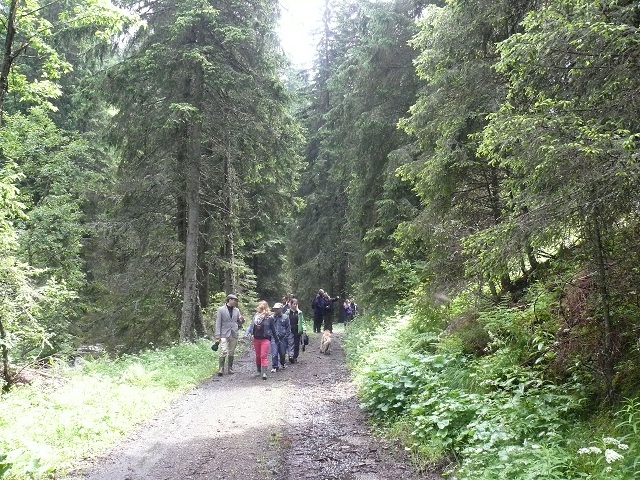Our journey continues….
Day 4: On the next day (–Wednesday 1st July) we travelled to mount Tara national park Serbia. On the road we saw extensive plantations of Pinus strobus. This is a rather unusual sight for us whereas in our country the forest vegetation is native, plantations are very small, and mostly on flatlands-river banks with Poplars.
At the national park visitors centre at Mitrovac we attended a presentation by the park forest engineer Ranko Milanović. Tara national park (as in the case of Kopaonick) is managed by a public-state owned – forestry enterprise. The necessary funds for the operation and development of the park are partly as a result of forestry production- a fact which is rather impressive for our practice. At Tara national park, authorities conduct a full inventory of the trees all year-round. This technique allows them to develop a very accurate monitoring system and data statistics. To apply something like this in Greece would be extremely desirable but the cost of it would be tremendous (with much higher wages than Serbia).
Day 5: (Thursday, 2nd of July 2015) – Kopački rit: The fifth day we visited the wetlands of Kopački rit -Croatia- in the area where the Danube meets the Drava river. It’s a wetland park of 321 km2 protected under the Ramsar convention. We attended a presentation at the park information center and also participated at a river excursion. There we had the opportunity to observe many protected bird species. In the afternoon, during the stop at Šumarija Batina, the chief of the forest management unit, Stanko Antunović, presented us the state forest company Hrvatske šume, which manages 80 % of Croatian forests.
From the discussions we understood that the old forest Service of Croatia has evolved to a public enterprise undertaking all the productive activities while the regulatory-legislative responsibilities have remained within the central government, but to a much smaller body-service.















 Saving...
Saving...
Leave a Comment